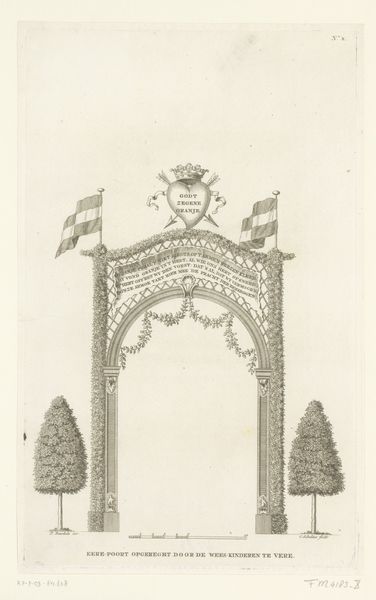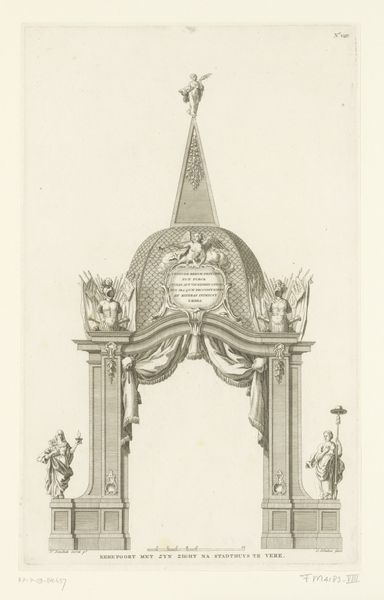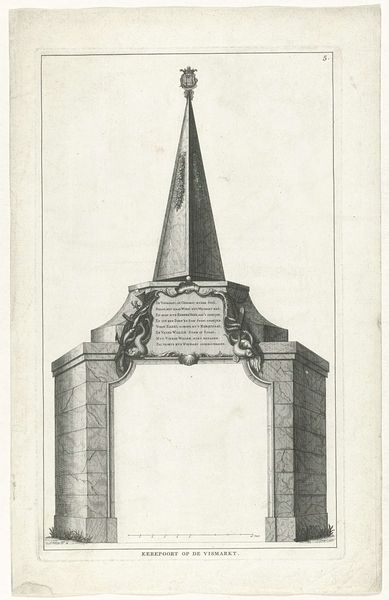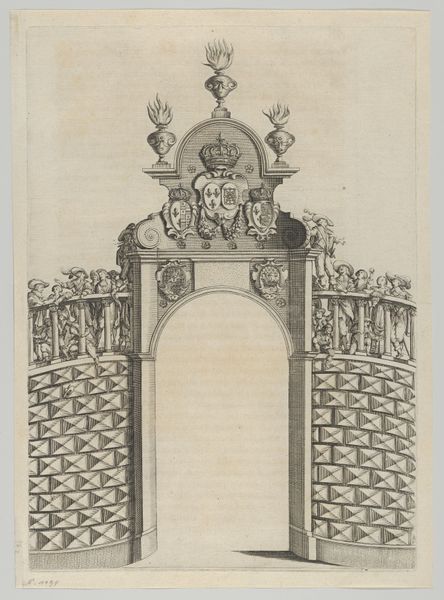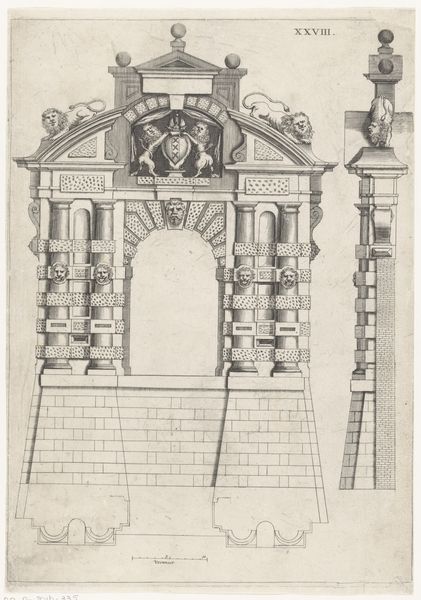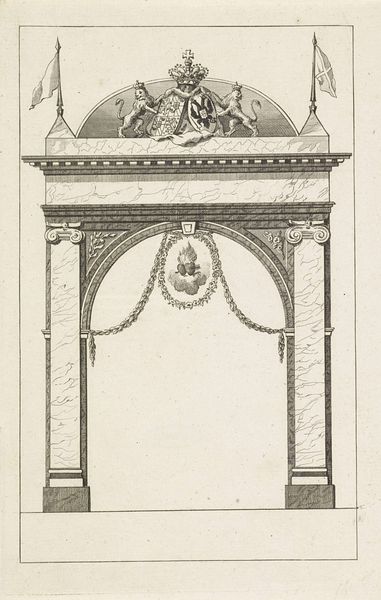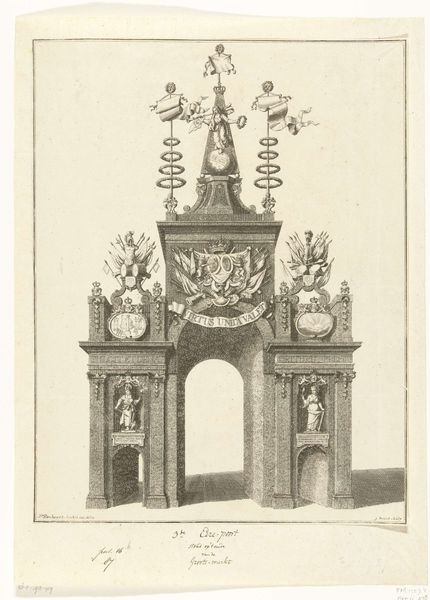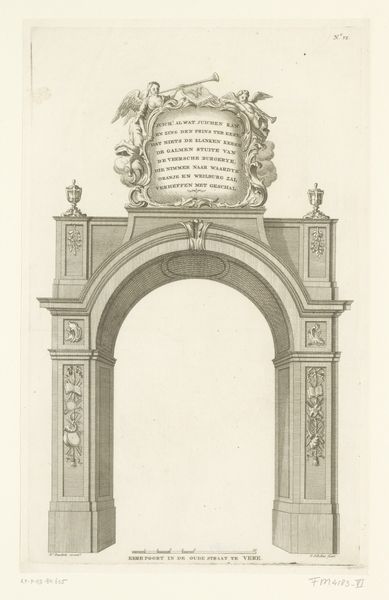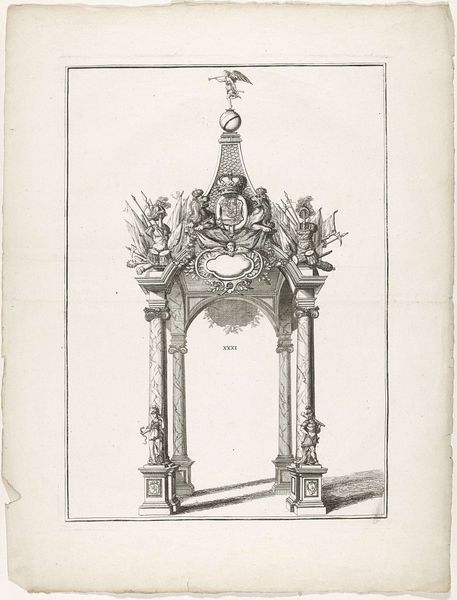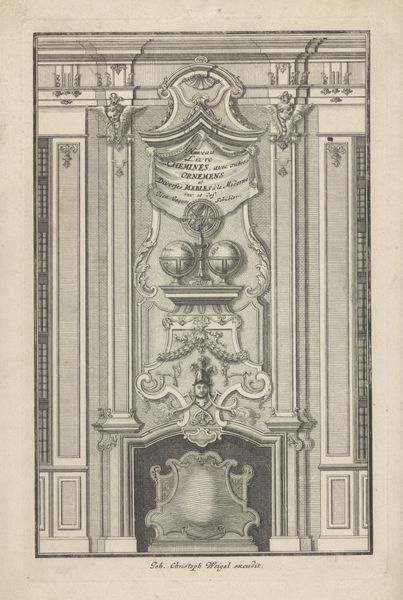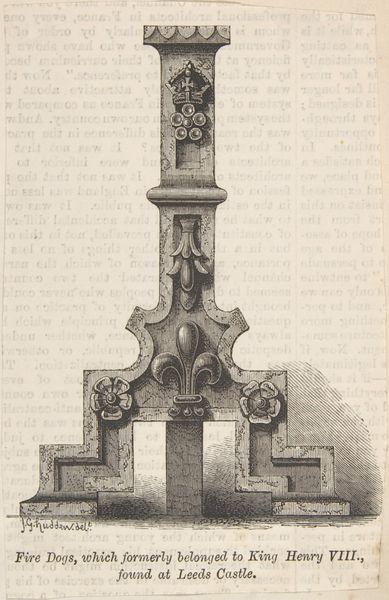
Erepoorten bij de intocht van Willem V te Veere (Nr. V), 1766 1766 - 1767
0:00
0:00
gerardsibelius
Rijksmuseum
drawing, print, engraving, architecture
#
drawing
#
neoclacissism
# print
#
cityscape
#
history-painting
#
engraving
#
architecture
Dimensions: height 377 mm, width 236 mm
Copyright: Rijks Museum: Open Domain
Gerard Sibelius made this print in 1766 to commemorate William V’s entry into Veere, in the Netherlands. Erected for the occasion, this temporary structure serves as a triumphal arch, blending classical elements with local symbolism. The image uses the visual codes of power: heraldry at the top, personifications of Veere holding the city’s coat of arms, and a formal inscription. This was the time of the Dutch Republic, a period marked by complex social hierarchies and political maneuvering. William V’s entry was a carefully orchestrated event that sought to reinforce the power of the House of Orange. Prints like these played a vital role. They disseminated images of authority and perpetuated the symbols of power through visual media. To truly understand this print, we’d need to delve into the archives of the House of Orange, explore the history of the Dutch Republic, and consider the visual culture of 18th-century Netherlands. Only then can we fully appreciate the social and institutional context in which this triumphal arch was conceived and represented.
Comments
No comments
Be the first to comment and join the conversation on the ultimate creative platform.
